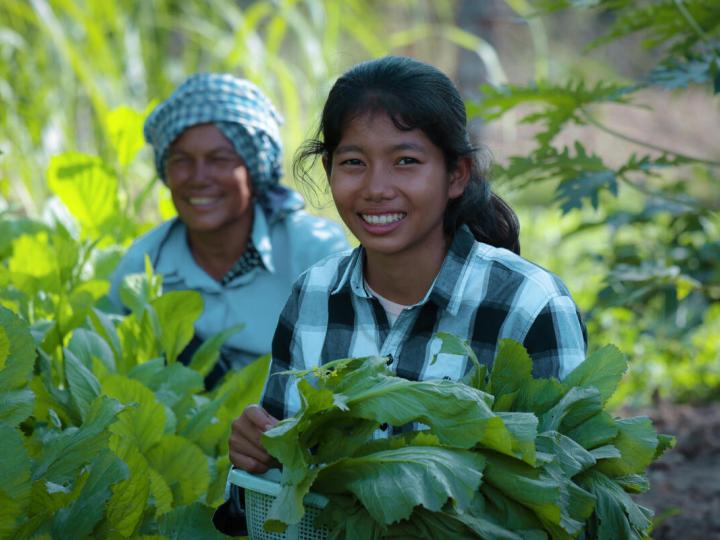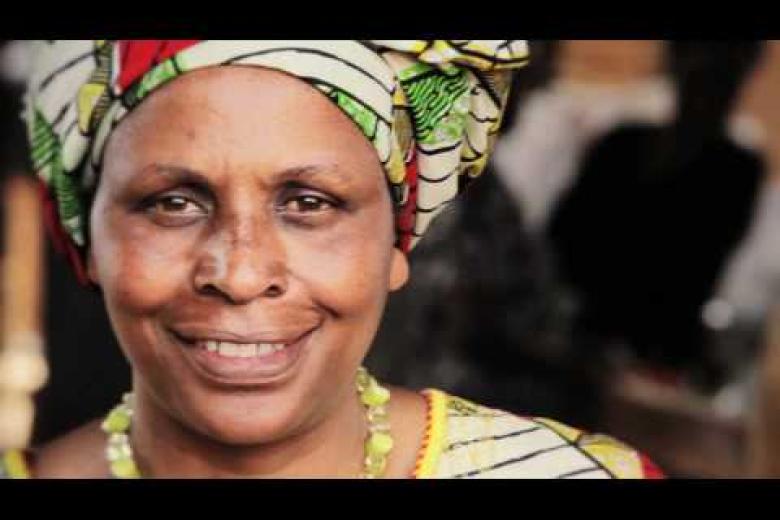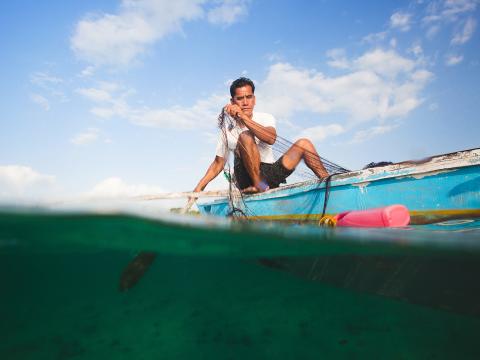
Microfinance
Microfinance
The Issue
Men and women around the world are struggling because they don’t have access to financial services, leaving them with limited income and job opportunities, creating uncertain futures for their families. According to the World Bank 2 billion people, more than half of the world’s adults, have no access to banking services[1]. When formalised microfinance is not available, families frequently have to rely on loans from traditional moneylenders who charge very high interest rates. The money is used to either invest in their farms or feed their families although the high interest rates make it impossible for the poorest families to break even and move out of this cycle of exploitation.
The Model
The Microfinance project model provides the formal financial assistance that rural families need. This can include loans for seeds, irrigation kits and fertiliser, savings accounts, and insurance for health, life and crops, all delivered with high standards of service. Financial assistance can help families strengthen their productivity and increase resources, with the goal to benefit their children.
World Vision's savings groups have been partnering with VisionFund International, our microfinance service provider, to access additional loan capital. For those groups or individuals who need more capital, VisionFund provides larger amounts than what the savings groups can provide, enabling members to increase their income and support the community’s economic growth.
Core Components & Outcomes
Loans: Microloans involve lending small sums of money, often just a few hundred dollars, to people who do not have a measurable credit history, assets to secure the loans, or access to mainstream financial providers. Credit can be used to purchase livestock, seeds for crops, fertiliser and irrigation kits, or to rent storage facilities allowing farmers to sell their produce when prices are higher. For other businesses, credit is available for start-up capital, to buy equipment or stock.
When loans are repaid, the funds are recycled to other borrowers generating a ‘recycling effect’. Unlike a donated asset, which is given to a community member or group and consumed once, that same amount can be used multiple times for multiple households increasing its impact within the community.
Savings: Savings are vital to build the resilience of families living in poverty, helping them to manage disasters and unexpected events and enable families to cope with irregular incomes, a common problem in agricultural communities. Without reserves, families may not be able to pay for basic necessities for extended periods. Access to a safe place to save (for individuals and saving groups) reduces vulnerability and builds resilience.
Insurance: Insurance products enable clients to guard against the failure of their crop through lack of rain or natural disaster. Health insurance helps provide funds when a member of the family is sick or dies.
Education: Education and training on financial literacy (debt management, cash flow and budgeting, and consumer protection), empowerment and social emphasis can improve the effectiveness of financial services and, consequently, increase their impact on children.
VisionFund provides financial solutions through 28 microfinance institutions located throughout Africa, Asia, Eastern Europe and Latin America. In 2018, 1.37 million loans were provided to over 1.1 million clients (70% were women) to help them improve their businesses and increase their income and impact over 3.5 million children globally.[2]
VisionFund impacted the lives of 4.1 million children and 70% of the loan recipients were women. When women have an opportunity to financially participate in their household, children are no longer deprived of basic necessities and are protected from the harmful coping strategies including early marriage, child labour and moneylender debt, all which lead to increasing challenges
[1] World Bank, Poverty and Shared Prosperity, 2016.
[2] VisionFund International, http://www.visionfund.org/
Countries implementing Microfinance
Armenia, Bolivia, DRC, Dominican Republic, Ecuador, Ghana, Guatemala, Honduras, India, Kenya, Kosovo, Malawi, Mali, Mexico, Mongolia, Montenegro, Myanmar, Peru, Philippines, Rwanda, Senegal, Serbia, Sri Lanka, Tanzania, Uganda, Vietnam, Zambia
For more information, visit VisionFund to read their Social Performance Reports showing how children and families are being impacted.
Learn more about World Vision's Livelihoods programmatic approaches or contact us at livelihoods@wvi.org.

